Canada is among the world’s premier jurisdictions for mineral exploration and mining and has become a go-to destination for the industry. Below, we present seven companies with exciting projects to watch.
ARIANNE PHOSPHATE
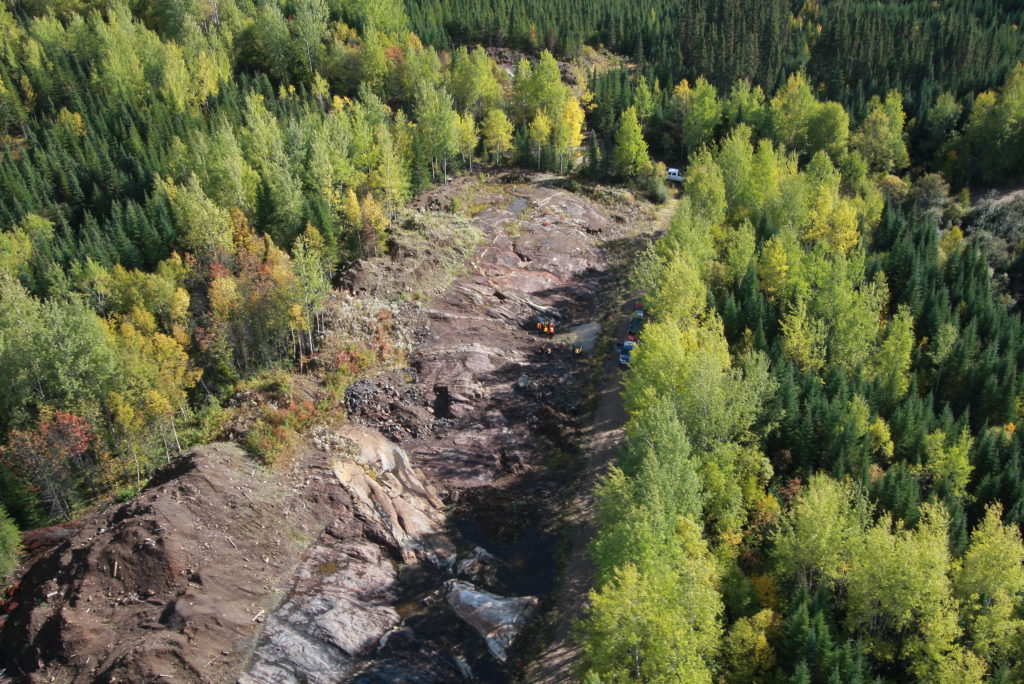 Field crew at Arianne Phosphate’s Lac à Paul project in Quebec. Credit: Arianne Phosphate
Field crew at Arianne Phosphate’s Lac à Paul project in Quebec. Credit: Arianne Phosphate
Arianne Phosphate (TSXV: DAN; US-OTC: DRRSF) is focused on its shovel-ready Lac à Paul phosphate project north of Saguenay-Lac-St-Jean, Que. Once in production, this operation could create 1,000 jobs and contribute $12 billion in economic benefits to the region, according to the company. Arianne is also in talks with the New Brunswick government about building a phosphoric acid plant in Belledune.
Lac à Paul has a large resource base capable of supporting production for over 50 years. The proven and probable reserves stand at 472.1 million tonnes grading 6.88% phosphorus pentoxide (P2O5). There are also 702.7 million measured and indicated tonnes at 7.16% phosphorus pentoxide and 26 million inferred tonnes at 6.58% P2O5. These numbers represent only the Paul deposits and their extensions. Resource estimates for four other phosphate deposits have also been made.
A 2013 feasibility study outlined a 26-year open pit mine and mill (located at the Saint-Rose-du-Nord port) capable of producing 3 million tonnes of apatite concentrate (38.6% P2O5) annually. The initial capital commitment would be US$1.2 billion, an amount to be paid back in less than five years. The phosphate price per tonne used in the study was US$213, compared to the total operating cost of US$93.68 per tonne. Lac à Paul is fully permitted. The study forecast a net present value with an 8% discount rate of $1.1 billion and an internal rate of return of 16.7%, both after-tax.
Arianne completed an internal update to these figures in 2020, improving grade and recovery substantially, however the study has not been released. The company says it is possible to make a 40% concentrate using lower temperature process water. Recoveries would be higher at 91% to 92% rather than the 90% estimated in the 2013 feasibility study. Offtake and marketing agreements are in place.
Arianne Phosphate has a market cap of $108 million.
CALLINEX MINES

Callinex Mines (TSXV: CNX; US-OTC: CLLXF) is exploring established mining camps near Flin Flon in Manitoba, Brunswick in New Brunswick, and Buchans in Newfoundland. The three regions have a long history of mining copper, gold, zinc, and silver.
In the third quarter of 2021, Callinex discovered the Rainbow deposit at its 100%-owned Pine Bay copper-gold project. Drilling has returned 37 metres grading 6% copper, including 1 metre of 18.81% copper and 1 metre of 18.3% copper from hole PBM-138. Hole PBM-129-W2 returned 67 metres grading 2.73% copper, including 13 metres of 8.75% copper and 2.1 metres of 17.6% copper. The last hole, PBM-129-W1, returned 4.9 metres grading 15.2% copper, including 2.8 metres of 21% copper. Assays are pending on about half of the holes in the 35,000-metre drill program completed last year.
In New Brunswick, the company is testing the Nash Creek project, which is also wholly owned. A 2018 preliminary economic assessment outlined an open pit mine with a 10-year mine life. There are two zones with total indicated resources of 13.6 million tonnes grading 2.68% zinc, 0.58% lead, 17.8 grams silver per tonne, and 3.21 grams gold per tonne. The project also has total inferred resources of 5.9 million tonnes grading 2.68% zinc, 0.47% lead, 13.9 grams silver per tonne and 3.11 grams gold per tonne. The estimate used a 1.5% zinc-equivalent cut-off grade.
Nash Creek has a pre-production capex of $168 million and an after-tax payback of 2.8 years. The after-tax net present value with an 8% discount rate is $128 million, and the internal rate of return is 25%.
Callinex’s 100%-owned Point Leamington volcanogenic massive sulphide (VMS) project in Newfoundland has a pit-constrained indicated resource of 5 million tonnes grading 0.9 gram gold per tonne, 12.2 grams silver per tonne, 0.54% copper, 0.01% lead, and 1.39% zinc (2.49 grams gold-equivalent per tonne). The in-pit inferred resource is 13.7 million tonnes grading 0.8 gram gold per tonne, 14.04 grams silver per tonne, 0.36% copper, 0.02% lead, and 1.74% zinc (2.24 grams gold-equivalent per tonne).
An out-of-pit inferred resource of 1.7 million tonnes grading 0.9 gram gold per tonne, 15.3 grams silver per tonne, 0.35% copper, 0.07% lead, and 2.72% zinc (3.06 grams gold-equivalent per tonne) has also been calculated.
The most recent drilling at Point Leamington expanded a high-grade zinc-gold zone, which remains open at depth. The best intersect was 4.7 metres grading 15.05% zinc, 437 grams gold per tonne, 57.88 grams silver per tonne, and 0.36% copper.
Callinex is also drilling the Superjack and Headway VMS project near the former producing Brunswick #12 mine.
Callinex Mines has a market capitalization of $43.9 million.
CENTURY GLOBAL COMMODITIES

Century Global Commodities (TSX: CNT; US-OTC: CEUMF) is investigating three major iron ore projects in Quebec. The company’s flagship property is the 100%-owned Joyce Lake direct shipping ore (DSO) project. Located about 19 km northeast of Schefferville and straddling the border with Labrador, the project is poised for near-term production, having a completed environmental impact statement and having received major permits.
A 2015 feasibility study on Joyce Lake using an iron ore price of US$95 per tonne, outlined an open pit mine life of five to seven years, producing about 2.5 million tonnes of lump and fines product annually. The post-tax net present value (NPV) with an 8% discount rate was $61.4 million and the internal rate of return (IRR) 13.7%. The capex of $96.6 million could be paid back in just under five years. Proven and probable reserves stand at 17.7 million tonnes grading 59.7% iron.
A 2015 preliminary economic analysis of Century’s nearby Full Moon taconite project forecast a mine life of more than 30 years. Using the same iron ore price of US$95 per tonne, the study put the NPV (8%) for that mine at $3 billion and the IRR at 12.4%. The initial capex of $7.2 billion could be paid back in 6.3 years. Full Moon has measured and indicated resources of 7.3 billion tonnes grading 30.2% iron, and inferred resources of 8.7 billion tonnes at 29.9% iron.
Last year, Century Global analyzed Joyce Lake and Full Moon as a single undertaking and reported that the post-tax economics were much improved: an NPV (8%) of $766.2 million and an IRR of 75.2%. The project would pay for itself in 1.2 years after the start of production.
At the company’s 100%-owned Duncan Lake magnetite project near Radisson in the James Bay region of Quebec, a PEA completed in 2013 forecast a 20-year life. Using a base case iron ore price of US$125 per tonne, the early-stage study outlined a post-tax NPV (8%) of $2.2 billion and an IRR of 15.9%. Payback of initial capex of $3.9 billion would take 4.8 years, after taxes.
Century Global is also the sole owner of the Black Bird DSO project 65 km northwest of Schefferville and the Hayot taconite project 20 km north of Schefferville.
Century Global has a market capitalization of about $17.2 million.
FJORDLAND EXPLORATION
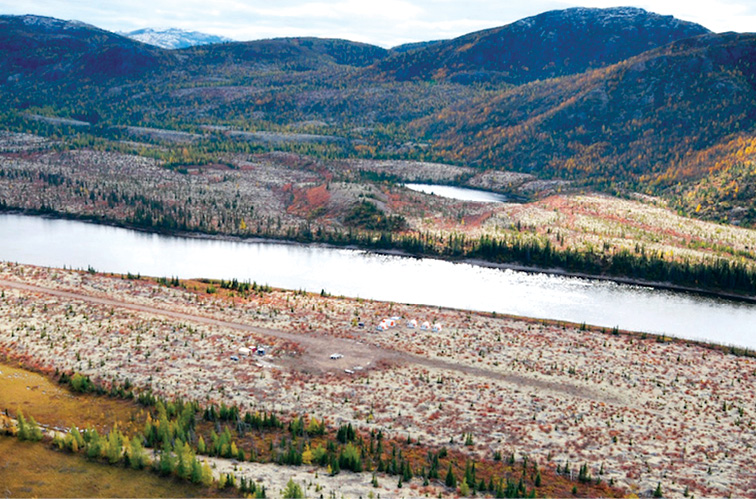
Fjordland Exploration (TSXV: FEX; US-OTC: FEXXF) is focused on its Renzy nickel-copper project, which it says could become Canada’s next nickel mine. The project is located near Maniwaki, Que., about 290 km northwest of Montreal. The former Renzy mine operated from 1969 to 1972 when 650,000 tonnes were mined and concentrates were sent to Falconbridge in Sudbury, Ont.
The past-producer is known for high-grade intersects such as 10.8 metres of 1.3% nickel and 1.8% copper drilled in 2005. A National Instrument 43-101 compliant resource estimate estimated 51,000 indicated tonnes at 0.78% nickel and 0.72% copper and an inferred resource of 280,000 tonnes grading 0.82% nickel and 0.89% copper.
Fjordland was granted an option in 2020 to earn 100% of Renzy (previously known as Vulcain) by owner Quebec Precious Metals and is particularly interested in the potential to outline large mineralized bodies at depth, deeper than 100 metres below surface.
It has identified three high priority drill targets as having a similar electromagnetic signatures as that from the past-producing Renzy pit area. No modern surveying or drilling has been done south of the shear zone, although a magnetic high similar to the one at the pit has been identified. Based on last year’s virtual time-domain electromagnetic survey, Fjordland plans to drill at Renzy this winter.
The company is also exploring in Labrador at its South Voisey’s Bay project, which is located in an intrusive complex similar to that supporting Vale’s large Voisey’s Bay copper-nickel mine, 80 km to the north. Fjordland says over $2.8 million has been expended at the project since 2017, and in 2020 the company completed geophysical reinterpretation and conducted a small geophysical survey.
Fjordland optioned 100% of the project from Commander Resources, and then invited High Power Exploration, a private company led by Robert Friedland, to earn a 65% interest in the project.
The company also holds a minority share in the Milligan West copper-gold project in central British Columbia, and earlier this year acquired the Witch copper-gold porphyry project west of Mount Milligan, B.C.
Fjordland Exploration has a market capitalization of $7.5 million.
FPX NICKEL
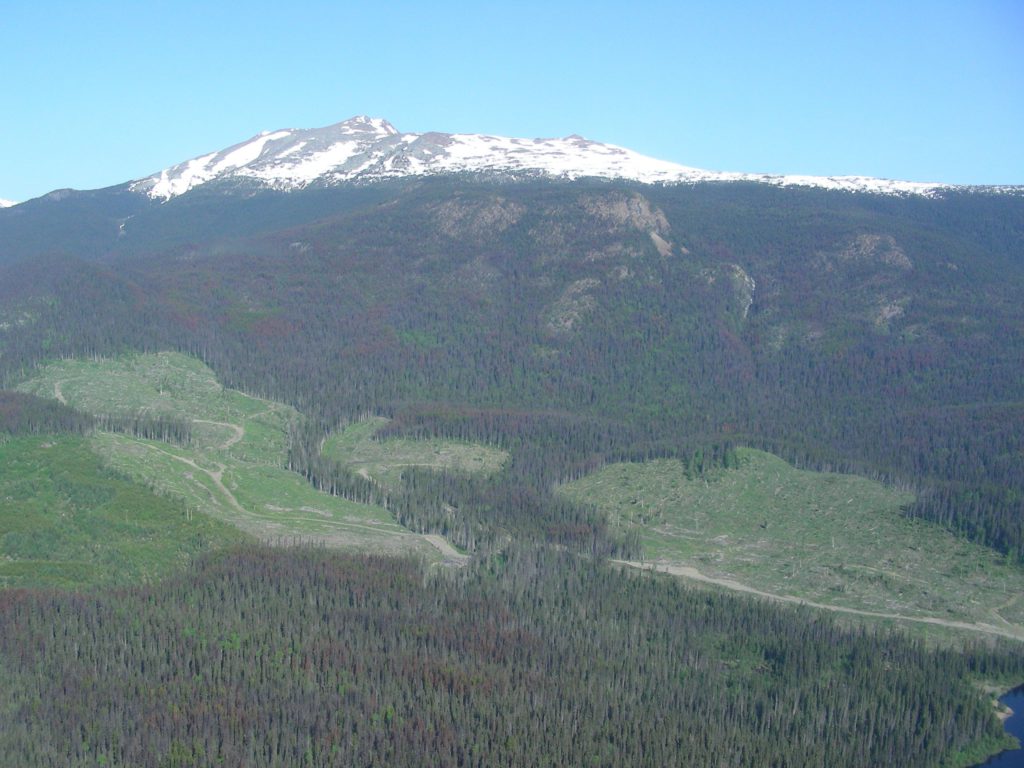
FPX Nickel’s (TSXV: FPX; US-OTC: FPOCF) flagship is the Decar nickel project in central British Columbia. The Baptiste deposit at the property could support one of the world’s 10 largest nickel mines producing 99 million lb. nickel annually in each of 35 years of production.
One interesting aspect of the Decar project is that the nickel mineralization occurs as awaruite, a natural nickel-iron alloy containing 75% nickel, 25% iron and no sulphur. The operation could produce both a ferronickel concentrate for the stainless steel market and separate nickel and cobalt sulphates for the electric vehicle (EV) market.
At a cut-off grade of 0.06% Davis tube recoverable (DTR) nickel, the deposit has 2 billion indicated tonnes grading 0.122% DTR nickel for 5.4 million lb. contained metal. The inferred resource is 592.9 million tonnes at 0.114% DTR nickel for 1.5 billion lb. contained nickel.
A preliminary economic assessment completed in 2020 put the pre-production capital requirement at US$1.7 billion, followed by sustaining costs of US$1.1 billion. The project would pay for itself in four years after taxes and have an all-in sustaining cost of US$3.12 per lb. nickel. The project was given an after-tax net present value with an 8% discount rate of US$1.7 billion and an internal rate of return of 18.3% using a nickel price of US$7.75 per pound.
FPX is moving the Decar open pit project toward a prefeasibility study, including metallurgical testing and pilot testing to optimize production of ferronickel concentrate, nickel sulphate and cobalt sulphate.
Six kilometres north of the Baptiste deposit, FPX has made another discovery at the Van target. The first drill program there, which started last year, returned 101 metres grading 0.15% DTR nickel starting at 27 metres from the surface. Drilling will continue this year.
The company has other exploration projects including Mich in Yukon and Orca, Wal and Klow in B.C.
FPX Nickel has a market cap of $150.5 million.
NORONT RESOURCES
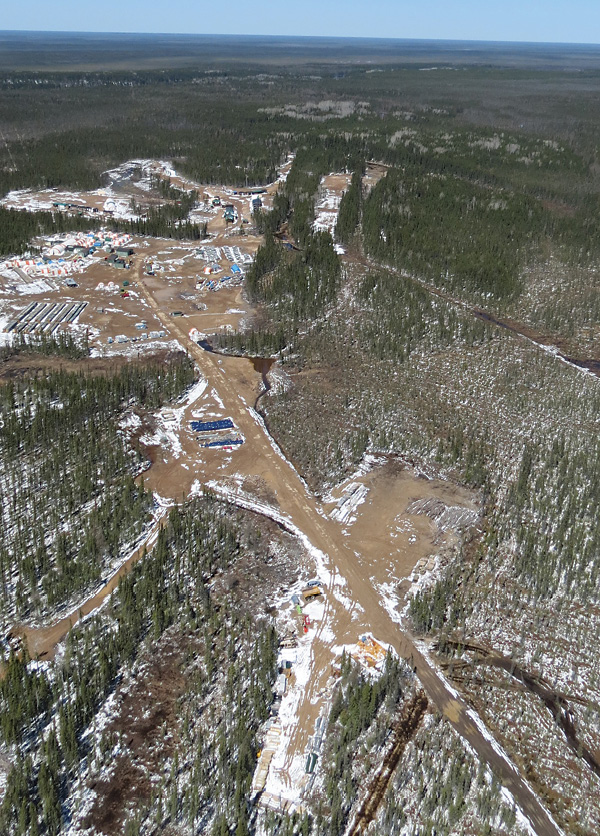
Noront Resources (TSXV: NOT; US-OTC: NOSOF) was the target of a heated takeover contest, won by Australian miner Wyloo Metals last year. A shareholder vote on the takeover is slated for mid-March and the acquisition is expected to close in the first quarter. Noront’s assets are located in Ontario’s Ring of Fire, near James Bay. It holds 100% interests in the Eagle’s Nest high-grade nickel-copper-platinum group metals deposit, the Blackbird chromite discovery, and the Black Thor chromite deposit. It also holds a 70% interest in the Big Daddy chromite deposit and a 100% interest in the Black Label deposit.
With so many riches in the ground, there remains much to be settled about the Ring of Fire — Indigenous participation, rail or road access, economic production decisions, and financing. A ferrochrome production facility is under consideration, perhaps in Sault Ste. Marie, Ont.
Noront has already produced a preliminary economic assessment for the Eagle One deposit (2008), a PEA at McFaulds Lake (2010), a prefeasibility study for Eagle’s Nest (2011), a feasibility study for Eagle’s Nest (2012) and a 43-101 technical report for the Nikka copper-zinc deposit (2020).
The first development in the Ring of Fire will probably be Noront’s Eagle’s Nest project. The feasibility study gave the project an after-tax net present value with an 8% discount rate of $543 million and an internal rate of return of 28%. A conventional 3,000 tonne per day, blasthole open stope underground mine with paste backfill is planned. Returning the tailings underground as fill means there would be no management facility at surface.
The Eagle’s Nest project has proven and probable reserves of 11.2 million tonnes grading 1.68% nickel, 0.87% copper, 0.89 gram platinum per tonne, and 3.09 grams palladium per tonne. The inferred resource is 9 million tonnes at 1.1% nickel, 1.14% copper, 1.16 grams platinum per tonne, and 3.49 grams palladium per tonne. Production of concentrates containing 34.2 million lb. nickel, 19.2 million lb. copper, 23,470 oz. platinum and 90,022 oz. of palladium annually is planned.
Capital costs were estimated at $609.4 million with operating costs of $1.1 billion over the life of the project. The study used metal prices of US$9.43 per lb. nickel, US$3.60 per lb. copper, US$1,600 platinum per ounce, and US$599 palladium per ounce.
The decision to begin development on Eagle’s Nest or any other of Noront’s projects in the Ring of Fire is dependent on the new owner.
Noront Resources has a market cap of $605 million.
UEX CORPORATION
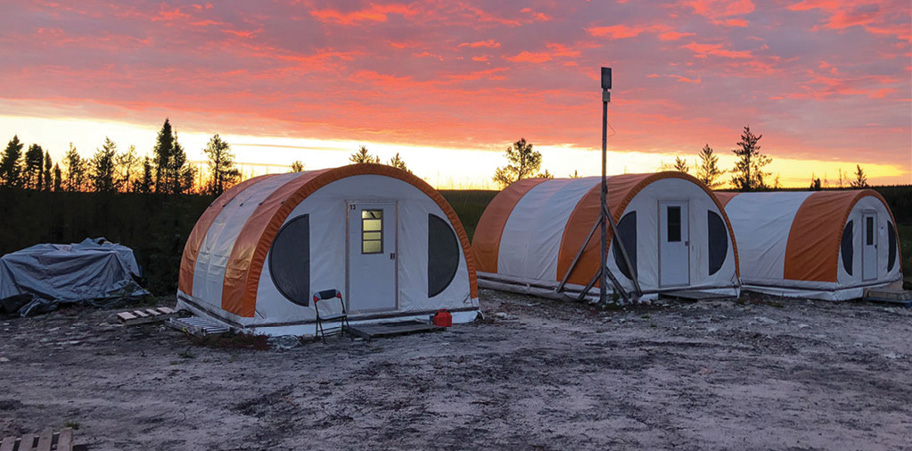
UEX Corp. (TSX: UEX) is focused on northern Saskatchewan’s Athabasca Basin, where it has interests in several advanced exploration stage uranium projects and one wholly owned nickel-cobalt project.
The most advanced of UEX’s undertakings is the Horseshoe Raven project between Cameco’s Rabbit Lake and McClean Lake uranium mines. The deposits lie between 100 and 450 metres below surface with no sandstone cover. The company is currently investigating the potential of using heap leach techniques to recover the uranium oxide.
The Horseshoe deposit contains an indicated resource of 5 million tonnes grading 2.15% uranium oxide for 23.6 million lb. contained uranium oxide, and the Raven deposit contains an indicated resource of 5.4 million tonnes at 0.117% for 13.8 million lb. contained uranium oxide.
The company also holds a 66% direct interest (along with joint venture partner JCU Canada) in the Christie Lake uranium project. The property hosts the Paul Bay, Ken Pen and Orora deposits about 9 km northeast of and along strike with Cameco’s MacArthur River uranium mine. With a 0.2% cut-off grade, the three deposits have a total inferred resource of 588,000 tonnes grading 1.57% uranium oxide (U3O8) for 20.35 million lb. contained uranium oxide.
UEX plans 9,000 metres of drilling this winter at Christie Lake to target basement-hosted deposits below, down-dip and down-plunge of the known deposits. The down-dip extension of previous uraniferous holes in the gap zones between the deposits will also be drilled. Targets have been chosen after completion of a structural reinterpretation of the Yalowega trend.
UEX’s cobalt-nickel project, West Bear, was discovered during exploration of the area surrounding the West Bear uranium deposit between 2002 and 2005 in the eastern part of the Athabasca Basin. The West Bear uranium deposit now forms part of UEX’s 100%-owned Hidden Bay project. UEX has spun out CoEX Metals to advance the West Bear cobalt-nickel project.
Previous drilling in one hole at West Bear returned 8 metres grading 4.9% cobalt and 2.08% nickel, and in a second hole, returned 10.5 metres of 2% cobalt and 1.26% nickel. The indicated resource is 1.2 million tonnes grading 0.19% cobalt and 0.21% nickel for 5.1 million lb. contained cobalt and 5.7 million lb. contained nickel. UEX estimates that 87.2% of the cobalt and 78.9% of the nickel is contained within a high-grade core. The deposit is open in all directions and suitable for open pit mining.
The company’s Shea Creek project is located in the western Athabasca Basin, 18 km south of the past-producing Cluff Lake uranium mine. It is a joint venture between UEX (49.1%) and Orano (50.9%). There are four deposits that if combined, form one of the largest undeveloped uranium resources in the region. All four of the deposits remain open for expansion.
Shea Creek hosts an indicated resource of 2.1 million tonnes grading 1.48% uranium oxide for 67.7 million contained lb. uranium oxide, and an inferred resource of 1.3 million tonnes at 1.005% for 28.2 million lb. contained uranium oxide.
UEX Corp. has a market capitalization of $213.3 million.

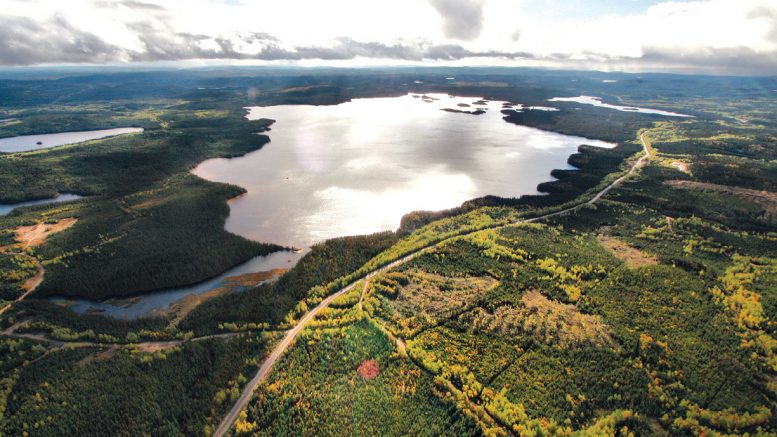
Be the first to comment on "Canadian Exploration Snapshot: Seven juniors exploring this country"